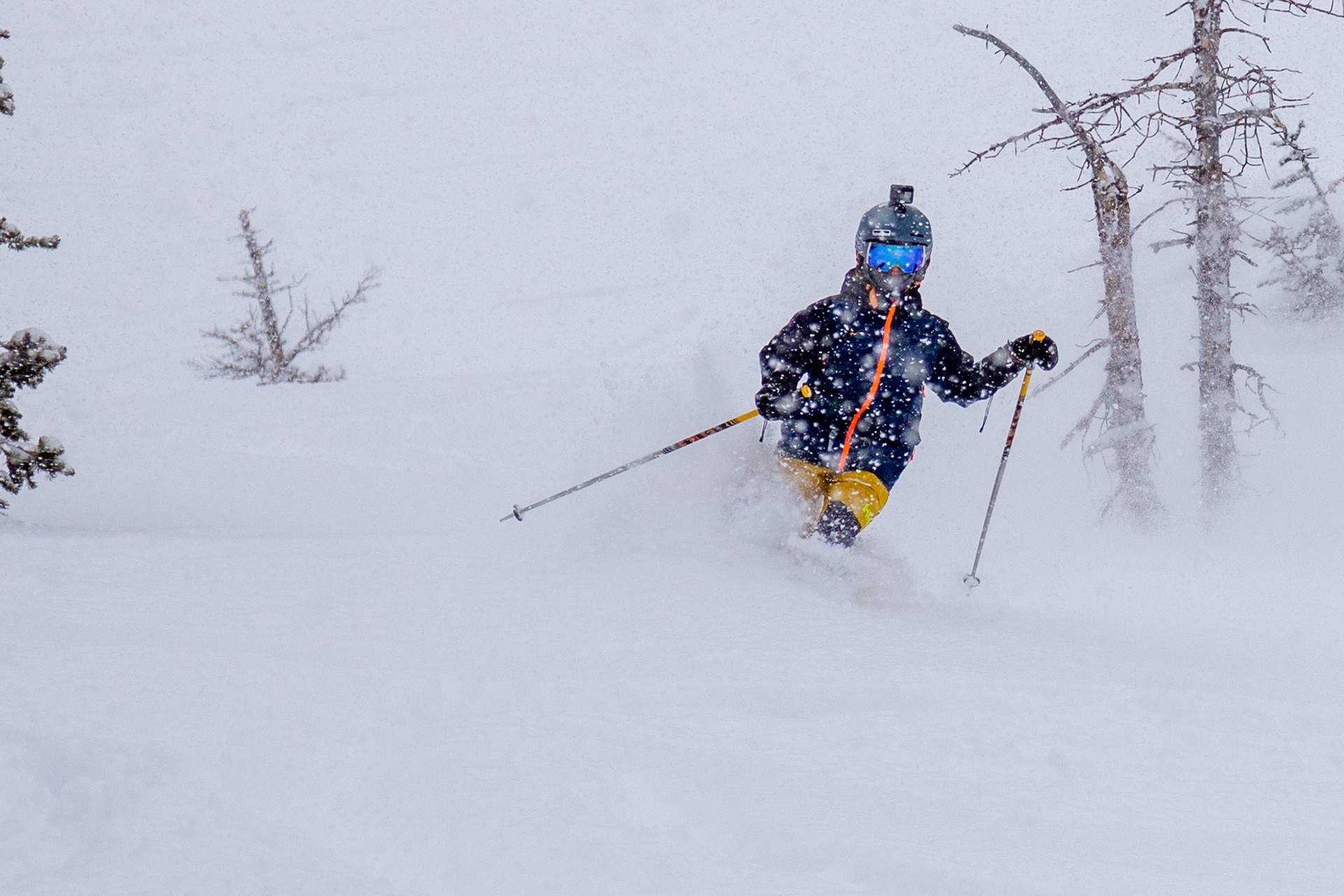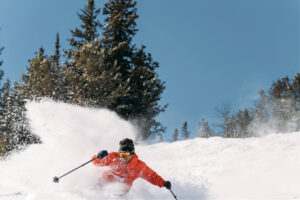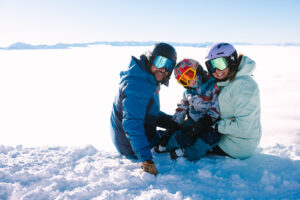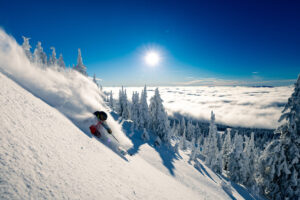Want to feel like a Jackson local? Check out our overview about Jackson Hole’s geography and weather patterns and you’ll be on your way.
Jackson Hole Like A Local
Jackson Hole Mountain Resort is located 12 miles northwest from the town of Jackson and is situated on the east side of the Grand Teton mountain range. This range is one of the most iconic and photographed in all of the United States and is anchored by the Grand Teton itself, rising to 13,775 feet.

Jackson Hole Mountain Resort extends from a valley base at 6,311 feet to a summit elevation of 10,450 feet. There is plenty of beginners and intermediate terrain, but Jackson Hole is best known for its consistent pitch with a vertical rise of over 4,000 feet.
Understanding the location of mountain ranges is important because big mountains create their own weather. Air is forced to rise over these masses of rock, and as the air rises it cools and moisture condenses into snow. This is called orographic lift and it’s the most important factor when forecasting powder.
If you’re looking at a weather map searching for the next storm heading toward Jackson Hole, keep your eyes peeled for storms that bring winds from the southwest, west or northwest. These winds all provide a good orographic lift and pump plenty of snow into Jackson Hole.

Temperature inversion at Jackson Hole
Another notable aspect of Jackson Hole’s weather is the temperature inversion where the base is colder than the mid and upper mountain. Cold air is denser than warm air, so it sinks and fills in lower elevation areas. As the cold air settles in the valley, the lower slopes can stay quite cold while the upper slopes above the inversion and can be 10 to 20 Degrees warmer.
When a favorable wind direction combines with good moisture and cold temperatures, massive snows can pile up. The average snowfall per season from 2007 to 2012 was 459 inches, a hefty amount for a mountain located well inland from an ocean moisture source. Snowfall is measured in various locations around the mountain by automated sensors.
But with over 4,000 vertical feet from bottom to top, snowfall amounts can be much different as you move around the mountain. Also, Jackson Hole can be quite windy at the summit, but dropping down into the bowls or trees usually protects skiers and the snow from being too wind affected.
Now that you know the local weather patterns at Jackson Hole and how snow is measured, the only thing left to do is enjoy your powder day!





